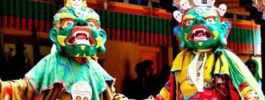Holi, also known as the Festival of Colors, is one of the most vibrant and joyous festivals celebrated in India. Over the years, the way Holi is celebrated has evolved significantly, influenced by modern trends and societal changes. The festival, traditionally celebrated in the Indian subcontinent, has now gained global popularity, with people from different cultures and backgrounds joining in the festivities. Let’s delve into the evolution of Holi celebrations in modern times and explore how the festival has adapted to contemporary influences while preserving its cultural and spiritual essence.
Digital Media and Holi Celebrations
In today’s digital age, social media platforms have played a significant role in shaping the way Holi is celebrated. The festival has become a trending topic on various social media channels, with people sharing their colorful Holi moments with friends and followers worldwide. The use of hashtags such as #Holi, #FestivalofColors, and #HoliCelebrations has helped in spreading the festive cheer beyond borders. From posting colorful selfies to sharing videos of Holi parties and events, digital media has made it easier for people to connect and participate in the celebrations virtually.
Moreover, digital platforms have also been instrumental in promoting eco-friendly Holi celebrations. With growing awareness about the harmful effects of chemical-based colors on the environment and health, many people now opt for organic and natural colors. Social media campaigns advocating for a safe and sustainable Holi have gained momentum, encouraging people to celebrate the festival in an environmentally-friendly manner.
Commercialization of Holi
While Holi has deep-rooted cultural and religious significance, it has also become commercialized in modern times. The festival has turned into a lucrative market for businesses, with the sale of colors, water guns, balloons, and other Holi-related products witnessing a significant boost during the festive season. Brands and advertisers leverage the festive spirit to market their products, leading to an increase in Holi-themed advertisements and promotions.
The commercialization of Holi has also given rise to Holi-themed events and parties, both in India and abroad. From Holi music festivals featuring renowned artists to themed parties at clubs and resorts, the festival has transcended traditional boundaries and evolved into a global celebration of colors and music. While some purists may argue that commercialization detracts from the festival’s spiritual essence, others view it as a way to promote cultural exchange and unity among diverse communities.
Changing Traditions and Customs
As Holi continues to evolve in modern times, certain traditions and customs associated with the festival have undergone changes. For instance, the way people play with colors has evolved from using natural powders to synthetic colors and water-based paints. Water balloons and water guns have also become popular additions to the festivities, adding an element of fun and playfulness to the celebrations.
Furthermore, the traditional ritual of Holika Dahan, which symbolizes the victory of good over evil, has also witnessed modifications in certain regions. While the bonfire ritual remains a central part of Holi celebrations, some communities have incorporated modern elements such as lighting eco-friendly bonfires or organizing cultural performances around the bonfire.
Preserving Cultural and Spiritual Significance
Despite the changes and adaptations in Holi celebrations, the festival’s cultural and spiritual significance remains intact. Holi continues to symbolize the triumph of good over evil, the arrival of spring, and the celebration of love and unity. Families and communities come together to partake in rituals, offer prayers, exchange sweets, and play with colors, fostering a sense of camaraderie and togetherness.
The evolution of Holi celebrations in modern times reflects the dynamic nature of cultural festivals in a globalized world. While contemporary influences such as digital media, commercialization, and changing traditions have impacted the way Holi is celebrated, the festival’s essence of joy, love, and togetherness endures. As Holi continues to transcend boundaries and bring people together in a riot of colors and festivities, it serves as a reminder of the rich cultural heritage and timeless traditions that define the spirit of India’s Festival of Colors.







